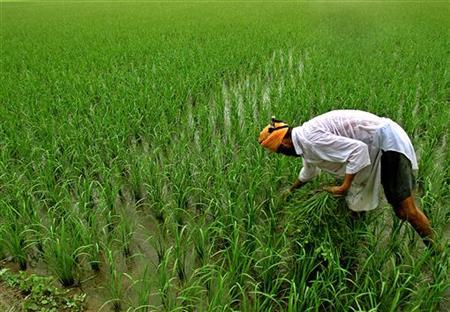Plunge in India Water Levels Threatens Farms: Study
Country: INDIA
Author: Krittivas Mukherjee

An Indian farmer inspects his paddy field in Taragarh village, 25 km
(16 miles) from the northern Indian city of Amritsar.
Photo: Munish Sharma
NEW DELHI - Groundwater levels in northern India have fallen about 20 percent more than expected because of excessive pumping, threatening to spark a major food and water crisis, according to a study based on U.S. space agency data.
The study, led by Matthew Rodell of NASA's Goddard Space Flight Center in Maryland, said groundwater across three states, including the New Delhi region, dropped at a rate of 1.6 inches per year between August 2002 and October 2008.
That depletion is double the capacity of India's largest reservoir and is around 20 percent higher than previous estimates by Indian authorities. More than 110 million people live across the three states, or nearly twice the population of Britain.
"If measures are not taken soon to ensure sustainable groundwater usage, the consequences ... may include a reduction of agricultural output and shortages of potable water, leading to extensive socio-economic stresses," the study said.
The findings, published in the journal Nature, come as almost a quarter of India faces drought because of failing monsoon rains this year. But the drop reported in the study came in years where there was no shortage of rainfall, so the decline was caused by excessive demand for irrigation and other uses.
The study, nonetheless, only confirms what has been long feared. Water shortages plague Indian cities and villages alike as a burgeoning population of 1.1 billion people tries to meet growing economic and farming activity, stretching natural resources.
Experts say water availability could impact economic activity in a country trying to beat a downturn and return to 9-10 percent growth.
The Indian government released an environmental report this week that said a growing percentage of its groundwater was neither drinkable nor could be used for irrigation.
"This illustrates that degraded water quality can contribute to water scarcity as it limits its availability for both human use and the ecosystem," the Indian report said.
© Thomson Reuters 2009 All rights reserved
